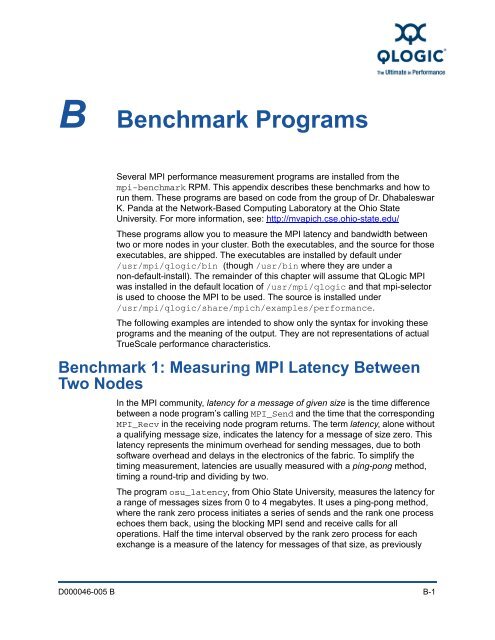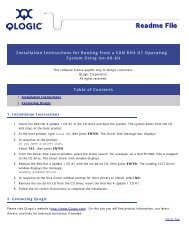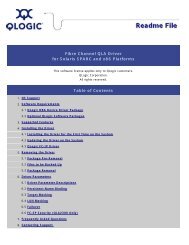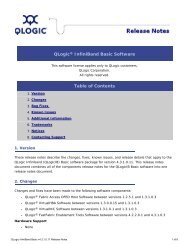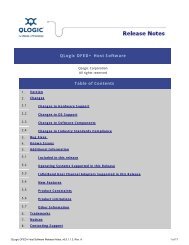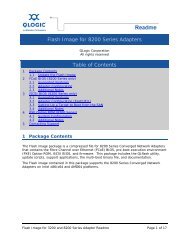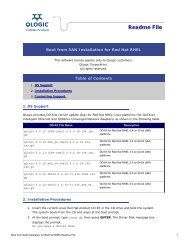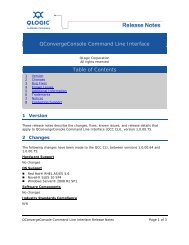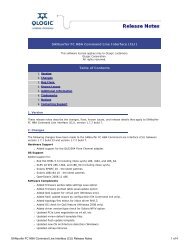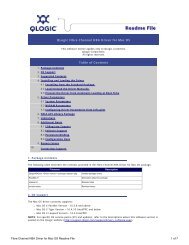QLogic OFED+ Host Software User Guide, Rev. B
QLogic OFED+ Host Software User Guide, Rev. B
QLogic OFED+ Host Software User Guide, Rev. B
Create successful ePaper yourself
Turn your PDF publications into a flip-book with our unique Google optimized e-Paper software.
B<br />
Benchmark Programs<br />
Several MPI performance measurement programs are installed from the<br />
mpi-benchmark RPM. This appendix describes these benchmarks and how to<br />
run them. These programs are based on code from the group of Dr. Dhabaleswar<br />
K. Panda at the Network-Based Computing Laboratory at the Ohio State<br />
University. For more information, see: http://mvapich.cse.ohio-state.edu/<br />
These programs allow you to measure the MPI latency and bandwidth between<br />
two or more nodes in your cluster. Both the executables, and the source for those<br />
executables, are shipped. The executables are installed by default under<br />
/usr/mpi/qlogic/bin (though /usr/bin where they are under a<br />
non-default-install). The remainder of this chapter will assume that <strong>QLogic</strong> MPI<br />
was installed in the default location of /usr/mpi/qlogic and that mpi-selector<br />
is used to choose the MPI to be used. The source is installed under<br />
/usr/mpi/qlogic/share/mpich/examples/performance.<br />
The following examples are intended to show only the syntax for invoking these<br />
programs and the meaning of the output. They are not representations of actual<br />
TrueScale performance characteristics.<br />
Benchmark 1: Measuring MPI Latency Between<br />
Two Nodes<br />
In the MPI community, latency for a message of given size is the time difference<br />
between a node program’s calling MPI_Send and the time that the corresponding<br />
MPI_Recv in the receiving node program returns. The term latency, alone without<br />
a qualifying message size, indicates the latency for a message of size zero. This<br />
latency represents the minimum overhead for sending messages, due to both<br />
software overhead and delays in the electronics of the fabric. To simplify the<br />
timing measurement, latencies are usually measured with a ping-pong method,<br />
timing a round-trip and dividing by two.<br />
The program osu_latency, from Ohio State University, measures the latency for<br />
a range of messages sizes from 0 to 4 megabytes. It uses a ping-pong method,<br />
where the rank zero process initiates a series of sends and the rank one process<br />
echoes them back, using the blocking MPI send and receive calls for all<br />
operations. Half the time interval observed by the rank zero process for each<br />
exchange is a measure of the latency for messages of that size, as previously<br />
D000046-005 B B-1


